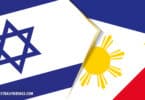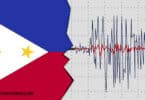The Philippines has a rich history shaped by various periods of foreign influence. The Spanish, American, and Japanese occupations left a significant mark on the country, not just politically and culturally, but also on how records were kept. For genealogists, these periods offer a treasure trove of documents that can be instrumental in tracing family histories.
The Spanish Era: The Foundation of Modern Filipino Records
The Spanish colonization of the Philippines began in 1565 and lasted for over 300 years. During this time, the Spanish established systems of governance and religion that deeply influenced Filipino society. One of the most significant contributions of the Spanish era to genealogy is the introduction of the Catholic Church’s record-keeping practices.
The Spanish implemented the Clavería decree in 1849, which required Filipinos to adopt Spanish surnames. This decree was a double-edged sword for genealogists. On one hand, it standardized surnames, making it easier to trace family lines. On the other hand, it sometimes severed connections to earlier indigenous names and identities.
Tracing Ancestry Through Spanish Church Records:
Church records, particularly baptismal, marriage, and death records, are some of the most valuable resources from the Spanish era. Priests in local parishes meticulously kept these records, often noting individuals’ names, parents, and grandparents. This can help build family trees over several generations.
Where to Find Spanish-Era Records:
1. Parish Archives: Start by visiting the local parishes where your ancestors lived. Parish priests often kept detailed records that have been preserved in parish archives.
2. Diocesan Archives: If local parish records are unavailable, diocesan archives are the next step. Each diocese in the Philippines often has a central repository of church records from all the parishes within its jurisdiction.
3. National Archives of the Philippines (NAP): The NAP holds microfilm copies of many parish records, especially those dating back to the Spanish period. You can visit their offices in Manila or check their online portal for available records.
4. FamilySearch.org: The Church of Jesus Christ of Latter-day Saints has digitized many Spanish-era church records in the Philippines. These can be accessed for free through their website.The American Period: Modernization and the Expansion of Civil Records
The American colonization of the Philippines began in 1898 after the Spanish-American War. The Americans introduced a new governance, education, and record-keeping system that continued to shape the country’s history.
One of the key contributions of the American period was the establishment of civil registration. This system made recording births, marriages, and deaths at the municipal level mandatory, creating a more systematic approach to record-keeping than during the Spanish era. Additionally, the Americans introduced English as a medium of instruction and record-keeping, which is reflected in many documents from this period.
Utilizing Civil Records from the American Period:
Civil records from the American era are invaluable for genealogists. They are often more detailed and accessible than those from the Spanish period.
Where to Find American-Era Records:
1. Local Civil Registry Offices: Each municipality or city in the Philippines has a civil registry office where birth, marriage, and death records are stored. You can visit the office where your ancestors lived to request copies of these records.
2. Philippine Statistics Authority (PSA): The PSA is the central repository for civil records in the Philippines. You can request copies of birth, marriage, and death certificates through their online service or by visiting their offices.
3. Ancestry.com: While primarily focused on American records, Ancestry.com has collections that include Philippine census data from the American period, which can be useful for tracing family history.
4. Library of Congress: The U.S. Library of Congress holds a collection of documents and records from the American period in the Philippines, including censuses, government reports, and other administrative documents.The Japanese Occupation: A Time of Turmoil and Displacement
The Japanese occupation of the Philippines during World War II was a dark period in the country’s history. From 1942 to 1945, the Japanese military took control of the Philippines, leading to widespread disruption and destruction. Many records were lost during this time, and the chaos of war led to the displacement of many families.
Despite the challenges, some records from the Japanese occupation can still be useful for genealogical research. For example, the Japanese government conducted its own censuses and kept detailed records of the population for administrative purposes. Additionally, some local records survived the war and can provide insights into family histories during this tumultuous time.
Researching Family History During the Japanese Occupation:
Researching genealogy from the Japanese occupation can be challenging due to the loss of records and the general turmoil of the period. However, survivors’ accounts, oral histories, and even diaries or letters from that time can provide valuable information.
Where to Find Japanese-Era Records:
1. National Archives of Japan: The National Archives of Japan holds some records from the occupation period, including administrative documents and censuses conducted during the war. These can be accessed online or through research requests.
2. University of the Philippines Diliman Library: The library houses a collection of wartime documents, including records from the Japanese occupation. These include government records, newspapers, and personal accounts.
3. Local Historical Societies: In some areas, local historical societies have preserved records from the Japanese occupation, including lists of displaced families, wartime deaths, and other important documents.
4. Personal Family Archives: Don’t overlook the importance of personal letters, diaries, and oral histories passed down in your family. These can provide unique insights into your family’s experiences during the Japanese occupation.The Legacy of Colonial Rule on Filipino Genealogy
The colonial periods left an indelible mark on the Philippines, shaping its culture and society and how records were kept. For genealogists, understanding the impact of Spanish, American, and Japanese rule is essential for navigating the wealth of information these periods offer.
Integrating Colonial Records Into Your Genealogy Research:
When conducting genealogical research in the Philippines, it’s crucial to consider the context of the records you are examining. The cultural and administrative shifts brought about by each colonial power mean that records from different periods may be organized and kept differently. Understanding these nuances can help you create a more accurate and comprehensive family history.
Church records from the Spanish era, civil registrations from the American period, and even the scant records from the Japanese occupation each contribute to the complex mosaic of Filipino ancestry. By exploring these sources, you can uncover your ancestors’ stories, from their everyday lives to how they navigated the challenges of colonial rule.
Tracing Your Roots Through Colonial Records
The history of the Philippines is deeply intertwined with its colonizers’ influences, which is reflected in the rich array of records available to genealogists. You can trace your ancestors’ journey through centuries of change and upheaval by delving into the Spanish church records, American civil registries, and even the remnants of Japanese wartime documents.
Whether you are just beginning your genealogical journey or have been researching for years, understanding the colonial influences on Filipino record-keeping can open new doors to discovering your family’s past. Each record is a puzzle piece, helping you build a clearer picture of where you come from and the legacy your ancestors left behind.
Read More:
“The Philippine Islands, 1493-1803” by Emma Helen Blair and James Alexander Robertson
This extensive collection of documents from the early Spanish period offers a glimpse into the early record-keeping practices in the Philippines. It is an essential resource for understanding the foundations of Filipino genealogy.
“Bound to Empire: The United States and the Philippines” by H.W. Brands
This book examines the American period in the Philippines, focusing on how U.S. colonial policies influenced the country’s administrative and record-keeping systems, which are crucial for genealogical research.
“Japanese Pan-Asianism and the Philippines from the Late Nineteenth Century to the End of World War II” by Sven Matthiessen
Matthiessen’s work explores the Japanese occupation’s impact on the Philippines, including introducing new record-keeping methods that have become valuable for genealogists tracing family histories from this era.
“Philippine History and Government” by Sonia M. Zaide and Gregorio F. Zaide
This book provides a comprehensive overview of the Philippines’ history. It covers the Spanish, American, and Japanese periods, offering insights into how each era influenced the preservation and organization of records.
“The Roots of the Filipino Nation” by Onofre D. Corpuz
This two-volume set provides an in-depth analysis of the Philippines’ historical development, including the colonial influences shaping the country’s genealogy. Corpuz’s work is an excellent resource for those looking to understand the broader historical context behind the records.






